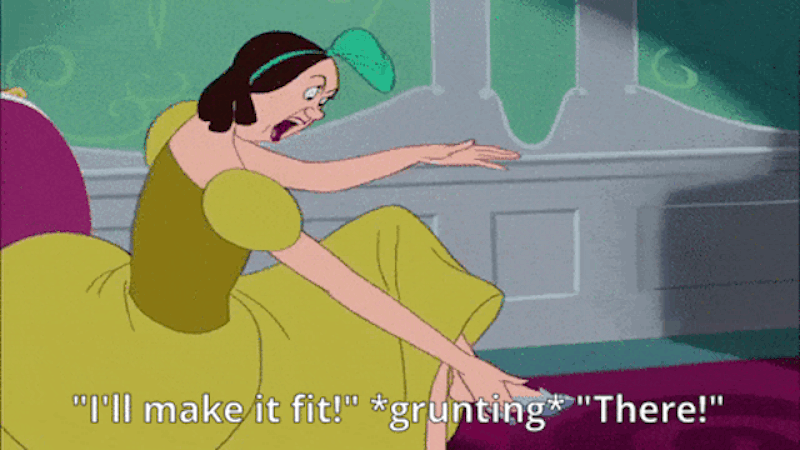LIDIA TALAVERA
Website Redesign & Ar Feature
Strategizing and executing the redesign of the website to enhance user experience and integrate innovative mobile features utilizing AR technology. This groundbreaking addition allows customers to accurately measure their feet and virtually try on shoes before making a purchase, revolutionizing the online shopping experience
Role: UX Designer, User Research.
Tools: Figma, FigJam, Miro, Adobe Creative, Google Suite,
Timeline: 4 months
Process: Research, Ideation, Prototyping, and Testing. Repeat.

EMPATHIZE
Cracking the Code
Revolutionizing Online Shopping for Every Foot
As technology creeps into every facet of daily life, consumers do most of their shoe shopping online. When it comes to high heels, we’ve observed it is much more difficult for a consumer to choose the right fit based on the number size alone because heels are more intricate and uniquely shaped than average tennis shoes.
Consumers with uniquely sized and shaped feet are especially unlikely to be successful with online shoe shopping, which is leaving them frustrated with the process and less hopeful that their order will be successful.
How might we create a service that can guarantee the correct size for an online shoe shopper and give them an overall positive experience?
-
We then performed a competitive analysis that included brands that target the same target as Lidia.
We found it very interesting that only big brands like Nike and Amazon provided their customers with an AR tool.
It was also eye-opening to see that none of the brands offered a personalized size guide which we believed had a considerable advantage in helping customers pick and choose their shoes while trying them on with AR software before they buy.
A resounding 90.3% expressed the need for a foot measurement feature
In this beginning phase, we sought out to understand how people experience shopping online.
We assumed that customers experience common pain points and frustrations, and there would be a need for technology for online shopping.
We surveyed 31 individuals, ages 18 - 55. 83.9% said they buy shoes online, and 90.3 % said a foot measurement feature would be helpful.
-
Some of the goals people aimed for were accurate sizing, price point, and style of the shoes.
-
For the pain points, users found that shopping online included return hassles, wrong or inaccurate sizing, or quality was not as expected.
-
We conducted five interviews to determine how my target users currently search and choose shoe brands to buy from, their shopping preferences and the pain points they experience with the online process.
DEFINE
MEET DONNA
A FASHIONISTA WITH SIZE 18 FEET
The Fashionista's Online Shoe Odyssey
In this case study, we aim to analyze the user journey for this e-commerce platform. The task flow begins with the user landing on the homepage, where they browse through various shoes, and ends the flow by ordering a product. Throughout this process, our goal is to identify pain points and opportunities for improvement to enhance the overall user experience and drive conversion
Navigating the Path to Perfection: User Flow Journey.
Our storyboard helps us tell stories about our user persona. This is useful and helps us to take the focus off our internal bias and assist us to empathize with our users.
IDEATE
Sole Searching
Crafting Concepts
After identifying the problem and our user, we gathered insights from our research and interviews with the founder and users. This led us to brainstorm solutions, focusing on defining new features aimed at helping users find the perfect shoe to ensure a smooth user experience during online shopping.
Questions we had:
- Do we need to educate the user about the AR technology?
- Is there a better way to show the customization option?
- How many steps is enough for the AR interaction work?
Initially, we crafted sketches (to the right) and constructed low-fidelity wireframes (below) to visualize the information architecture and gain deeper insights into the flow between screens.
Color Couture
the Chic Palette for Lidia's Vision
This mood board sets the aesthetic tone for the new website and serves as a guiding beacon during the design process.
We maintained the original nude while introducing accents of burgundy and metallic rose gold.
This carefully curated color palette reflects Lidia's vision for a sophisticated, sexy, and inclusive brand for her company.
We also selected imagery that highlights the product.
The decision to use the Gilroy type font in our design was deliberate and strategic. Its clean lines and modern aesthetic perfectly complement the sleek and contemporary look we aim to achieve.
PROTOTYPE
Accelerating Success Through Prototype Trials
Next, it was time to put our design to the test. In this pivotal stage, we uncover valuable insights and refine our vision to ensure a seamless user experience.
We aimed to determine whether our design would help users find a perfect shoe as well as use the new tools were were developing: the Try-on and Measuring tool.
Find Sammi shoes on Homepage, and click the associated AR Icon.
Find Sammi shoes on Homepage, and click the associated AR Icon.
Find Try-On Feature, try on “Sammi” and add them to the cart.
Find Try-On Feature, try on “Sammi” and add them to
Find Measure Feature and get a size. Save your size. Return to AR hub.
KEY TAKEWAYS
TASK #1
The main curveball for users was about the AR (how it works/what it is) but not the design or the flow themselves. For that reason, we understand that the user needs to be educated in how to use the new technology.
-
1 - Determine if users can complete the requested tasks efficiently and in a timely manner.
2 - Determine if there are any pain points while using the webpage.
-
A & B Testing and Participant Observation with random participants performing a series of pre-established tasks.
TASK #2
Simple language and an organized Information Architecture (IA) contributes to a positive user experience - improving performance and increasing usability.
TASK #3
Even though some users were exposed to the AR Technology for the first time, they were intrigued and found the measuring tool to be very helpful when shopping online.
the design evolution
Sketch -> Lo-Fi -> Mid-Fi -> Hi-Fi
LESSONS LEARNED
Final thoughts & lessons learned
Founder's Vision and Open-mindedness
Lidia Talavera, the visionary founder behind the business, entrusted us with full autonomy to redesign her website, explore innovative UX/UI solutions, and develop cutting-edge technology to address customer pain points. The project is currently on hold as Lidia seeks funding to support its realization. In the meantime, we are delving deeper into AR technology, strategizing its seamless integration, and preparing for rigorous testing as we pave the way for transformative changes ahead.
User Education on New Technology
Another crucial lesson gleaned from this experience is the necessity of educating users about new technologies. We discovered that even groundbreaking features can be met with resistance or confusion if users are not adequately informed about their purpose and functionality. Moving forward, we will prioritize user education initiatives, including tutorials, guides, and demos, to ensure seamless adoption and maximize the benefits of innovative technologies.
Budget Limitations and Development Costs
One of the key takeaways from this case study is the importance of carefully managing budget limitations, particularly in the context of development costs. We learned that while ambitious goals can drive innovation, they must be balanced against the financial constraints of the project. Going forward, it is essential to conduct thorough cost analysis and prioritize features to ensure that resources are allocated effectively.
Thank you!


















